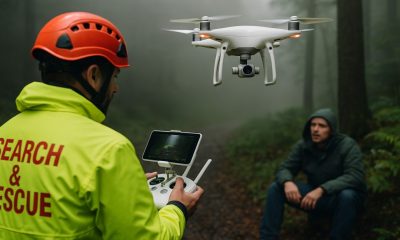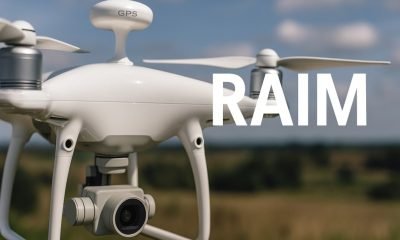- Acronym Guide
- AAM
- ABS
- AC
- ACAS
- ADS-B
- AFAC
- AGL
- AI
- AIM
- ALS
- AM
- AMA
- ANSP
- APPI
- AUV
- AUVSI
- ARPAS-UK
- ASTM
- ATC
- BVLOS
- CAA
- CAAC
- CAB
- CASA
- CATT
- CBO
- CBR
- CBRN
- CDMA
- CDR
- CFR
- COA
- COMINT
- CORS
- COTP
- COTR
- CPTED
- CV
- C2
- DAA
- DEM
- DFI
- DFS
- DGCA
- DHS
- DOD
- DPA
- DPEs
- DRO
- DSM
- DSMX
- DSP
- DSSS
- DTM
- EASA
- EFT
- EO
- EOD
- EO/IR
- ELINT
- EMI
- ESC
- EVLOS
- eVTOLs
- FAA
- FCC
- FCS
- FHSS
- FICCI
- FLIR
- FOB
- FOV
- FPS
- FPV
- GBDAA
- GCP
- GCS
- GDPR
- GNSS
- GPS
- GSD
- GVC
- HDR
- HOGE
- IACRA
- ICAO
- ICS
- IMU
- INS
- IR
- ISA
- ISR
- ITU
- LAAMS
- LAANC
- LAATM
- LAI
- LBA
- LIDAR
- LOS
- LSALT
- MAC
- MAVLink
- MLIT
- MMS
- MSL
- MTOM
- NDAA
- NCSL
- NFZ
- NIST
- NMEA
- NOTAM
- NPA
- NPRM
- NTIA
- OEM
- OFDM
- OOP
- PASM
- PAV
- PCV
- PdM
- PEC
- PIC
- PID
- PIPL
- PLD
- PM
- PN
- PPK
- PPS
- PSM
- PWM
- UAM
- UAOP
- UAS
- UASTM
- UAV
- UCAVs
- UHD
- UHF
- USV
- UTM
- RAIM
- RCC
- RCS
- RFI
- ReOC
- RePL
- RMS
- ROI
- RPAS
- RPC
- RTH
- RTK
- SaR
- SAR
- SARP
- SBAS
- S.Bus
- SEDENA
- SfM
- SFOC
- SIGINT
- SLAM
- SMS
- SORA
- STTR
- sUAS
- TCAS
- TCCA
- TFR
- TIN
- TOF
- TP
- TPS
- TSA
- VHF
- VLOS
- VTOL
Drone Acronyms
What is ELINT (Electronic Intelligence) & How Does it Work?
By
Jacob StonerTable Of Contents

Definition
ELINT stands for Electronic Intelligence. It involves the interception and analysis of non-communication electronic signals, typically emitted by radar and other electronic systems, to gather intelligence on enemy capabilities and activities.
Relevance to the Industry
ELINT is vital for national security, providing insights into the electronic capabilities and operations of adversaries. The use of drones for ELINT missions enhances the ability to conduct surveillance and gather intelligence in areas that are difficult or dangerous for manned aircraft to reach.
How Does Electronic Intelligence (ELINT) Work?
Electronic Intelligence (ELINT) is a subset of signals intelligence (SIGINT) focused on intercepting and analyzing non-communication electronic signals, primarily from radar systems and other electronic emitters. ELINT is crucial for understanding the capabilities, locations, and operations of adversary electronic systems. Here’s a detailed explanation of how ELINT works:
1. System Components
- Interception Equipment: High-sensitivity receivers and antennas designed to capture electronic emissions from radar and other electronic sources.
- Processing Units: Advanced computers and signal processors that analyze the intercepted signals to extract valuable information.
- Analyst Workstations: Workstations equipped with specialized software tools where analysts interpret and evaluate the data.
- Data Storage: Systems that store intercepted signals and processed intelligence for detailed analysis and future reference.
2. Types of Signals Collected
- Radar Signals: The primary focus of ELINT, including both pulsed and continuous wave radar emissions used for detection, tracking, and targeting.
- Other Electronic Emissions: Signals from electronic warfare systems, navigational aids, and other non-communication electronic devices.
3. Signal Interception
- Collection Platforms: ELINT data is collected using ground-based stations, airborne platforms (reconnaissance aircraft, drones), naval vessels, and satellites.
- Frequency Coverage: ELINT systems cover a wide range of frequencies to capture various electronic emissions. This includes monitoring specific frequency bands known to be used by potential targets.
4. Data Processing
- Signal Detection: Intercepted signals are detected based on their frequency, pulse repetition frequency (PRF), pulse width, and other characteristics.
- Signal Characterization: Detailed analysis of the signal parameters is performed to characterize the source. This includes identifying the type of radar (e.g., search radar, fire-control radar), its operational mode, and its technical specifications.
- Deinterleaving: In environments with multiple overlapping signals, deinterleaving techniques are used to separate and identify individual signals from the mix.
5. Data Analysis
- Emitter Identification: Using a database of known emitters, analysts compare the intercepted signal characteristics to identify the specific radar or electronic system.
- Geolocation: The location of the emitting source is determined using triangulation and other geolocation techniques. This involves measuring the time difference of arrival (TDOA) and angle of arrival (AOA) of the signals.
- Pattern Analysis: Analysts study the patterns of the intercepted signals to understand the operational behavior and deployment patterns of the electronic systems. This includes analyzing signal strength, duration, and movement.
6. Dissemination of Intelligence
- Reporting: The findings are compiled into intelligence reports that provide detailed information about the intercepted emissions, their sources, and their implications.
- Real-Time Alerts: In situations where immediate action is required, real-time alerts are issued to relevant military or intelligence units.
- Archiving: Processed ELINT data and reports are stored in databases for future reference and long-term strategic analysis.
7. Applications and Use Cases
- Military Operations: ELINT is used to identify and track enemy radar systems, assess their capabilities, and develop countermeasures. It provides critical information for electronic warfare and mission planning.
- Strategic Intelligence: Understanding the electronic order of battle (EOB) of potential adversaries, including the locations and types of radar and electronic systems deployed.
- Electronic Warfare (EW): ELINT supports EW operations by providing information needed to jam, deceive, or evade enemy radar systems.
- Threat Assessment: Identifying and monitoring the development and deployment of advanced radar systems and other electronic threats.
- Surveillance and Reconnaissance: Supporting surveillance missions by providing electronic intelligence on the presence and activities of hostile forces.
Understanding how Electronic Intelligence (ELINT) works underscores its importance in modern defense and intelligence operations. By intercepting and analyzing electronic emissions, ELINT provides critical insights into the capabilities and intentions of adversary electronic systems, supporting informed decision-making and effective operational planning.
Example in Use
“ELINT-equipped drones were deployed to monitor radar installations, providing crucial data on enemy defense systems.”
Frequently Asked Questions about ELINT (Electronic Intelligence)
1. What types of systems typically emit signals that are intercepted by ELINT?
Answer: The types of systems that typically emit signals intercepted by ELINT include:
- Radar Systems: These are used for detection, tracking, and navigation, emitting signals that can be intercepted to determine their location, type, and operational status.
- Missile Guidance Systems: Emit signals that can be analyzed to understand their targeting and guidance mechanisms.
- Electronic Warfare Systems: These emit various types of signals intended to disrupt or deceive enemy electronics, and intercepting these can provide insights into their tactics and capabilities.
- Military Communication Systems: Although primarily the focus of COMINT, some non-communication signals emitted by these systems can also be intercepted by ELINT to gather intelligence on the operational environment and equipment.
2. Why is ELINT important for military operations?
Answer: ELINT is important for military operations because it:
- Provides Tactical Intelligence: Offers insights into the electronic capabilities and operations of adversaries.
- Enhances Situational Awareness: Helps military forces detect and understand enemy electronic systems, such as radar and missile guidance.
- Supports Strategic Planning: Provides data that informs strategic and tactical decision-making.
- Improves Operational Security: Identifies and mitigates potential electronic threats, enhancing overall mission safety.
3. What are the benefits of using ELINT-equipped drones?
Answer: The benefits of using ELINT-equipped drones include:
- Remote Monitoring: Allows for the surveillance of electronic emissions in remote or hostile areas without risking personnel.
- Real-Time Intelligence: Provides immediate insights and intelligence from intercepted electronic signals.
- Extended Coverage: Enhances the reach of ELINT operations by covering large areas and diverse electronic sources.
- Strategic Advantage: Improves the ability to detect and analyze enemy electronic systems, providing a tactical edge in military operations.
For examples of these acronyms visit our Industries page.
As the CEO of Flyeye.io, Jacob Stoner spearheads the company's operations with his extensive expertise in the drone industry. He is a licensed commercial drone operator in Canada, where he frequently conducts drone inspections. Jacob is a highly respected figure within his local drone community, where he indulges his passion for videography during his leisure time. Above all, Jacob's keen interest lies in the potential societal impact of drone technology advancements.











